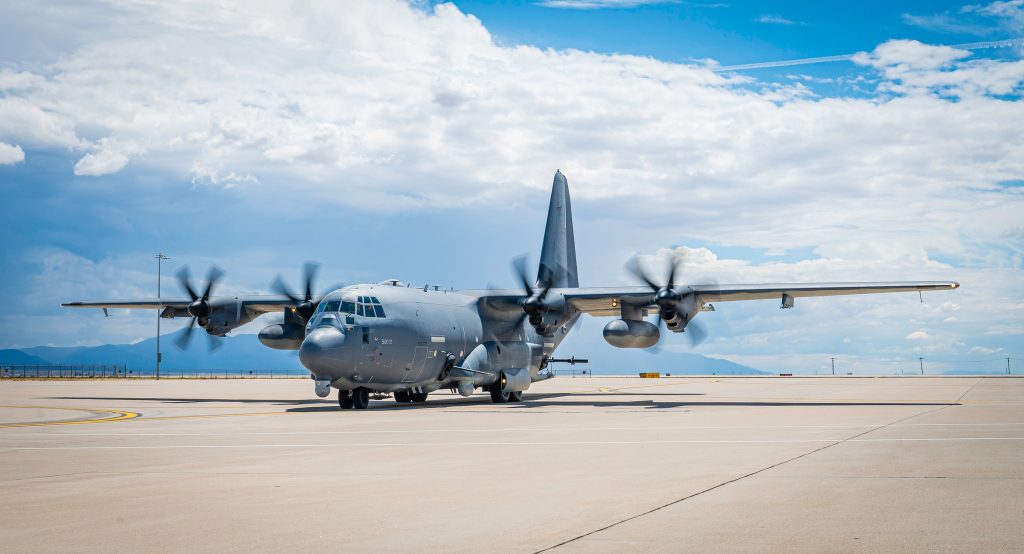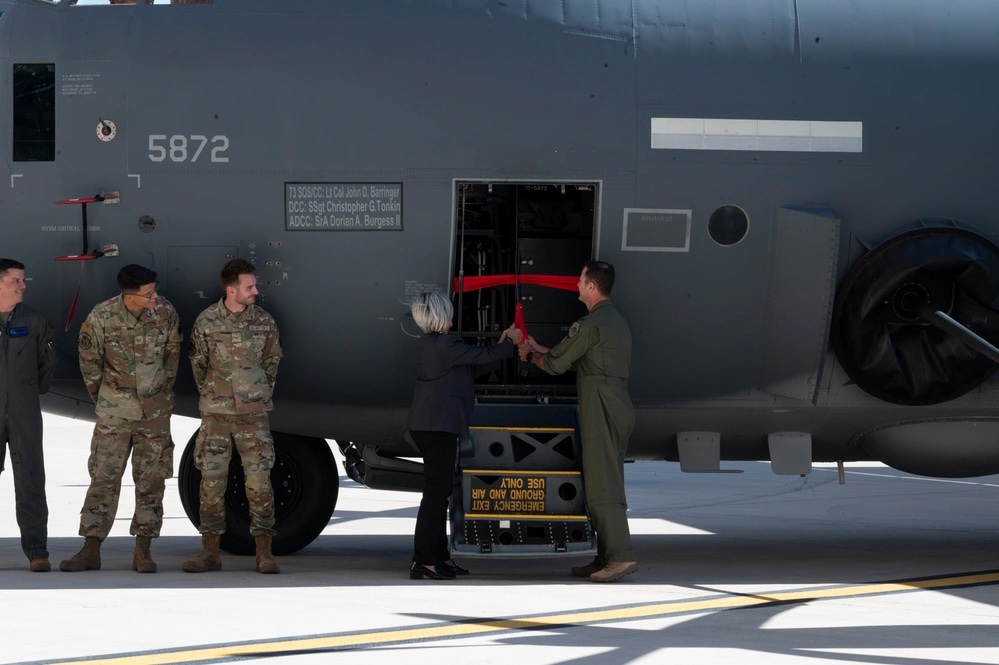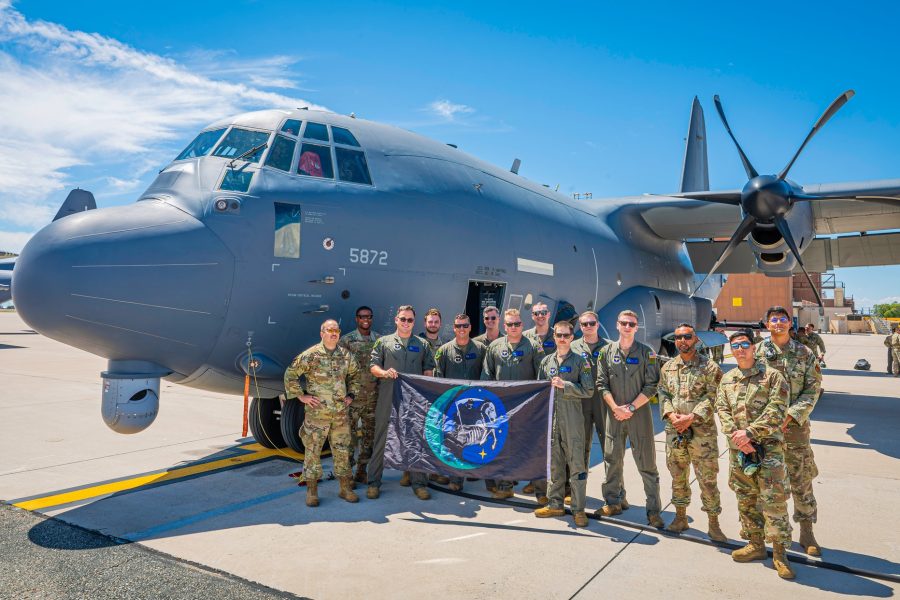Late last month, Kirtland Air Force Base in New Mexico welcomed a new resident: an AC-130J Ghostrider flying in from its old home at Hurlburt Field, Fla.
The arrival, celebrated with an official ceremony Sept. 5, marks a new chapter for Air Force gunship aircrew training, which is currently split between the two locations. By bringing AC-130J training under one roof, planners hope to make the training pipeline faster and more efficient.
“The training quality has been outstanding,” Lt. Col. John Barringer, commander of the 73rd Special Operations Squadron at Kirtland, told Air & Space Forces Magazine. “We’re focused on being able to reduce the timeline, get that standard of training that the AC-130 community has established, and then get them [aircrew] to the operational unit faster.”
Under the status quo, AC-130J student pilots complete their initial qualification training at Kirtland for about four to six months. That’s where students learn to fly the C-130J, the four-engine transport plane of which the AC-130J is a variant.
Once they complete initial qualification training, students move to Hurlburt to start mission qualification training, which is where they learn to fly the AC-130J, a ground attack platform with two cannons sticking out the left side of the fuselage, the ability to drop a range of bombs and missiles, and a crew in back who operate the aircraft’s weapons and sensors.
Mission qualification training “really familiarizes them with how we employ the AC-130J Ghostrider,” said Lt. Col. Joshua Martin, operations officer for the 73rd SOS. “That is more like the mission sets that we accomplish, how to integrate with the crew for the mission.”

The problem with the current arrangement is the transit to Hurlburt: paperwork, finding lodging in Florida, and travel itself stretches the pipeline by about a month.
“It’s a break in training for at least a month, if not more,” Barringer said. “We reduce that month gap immediately by moving them right to the flightline as soon as they’re done with the initial qual.”
The move will also benefit the rest of the crew, as the 73rd will conduct all initial and upgrade training for pilots, combat system officers, weapons system operators, aerial gunners, and other positions, Martin said. The current arrangement for those other crew members is more disparate, with some Airmen training at the 19th Special Operations Squadron at Hurlburt.
The journey back to Kirtland also streamlines things on the organizational side of the house. Under the status quo, AC-130J crew training takes place under both Air Education and Training Command (AETC), which oversees the 58th Special Operations Wing at Kirtland, and Air Force Special Operations Command (AFSOC), which oversees Hurlburt Field.
Putting all training activities under AETC helps centralize training resources and expertise, which lets AFSOC focus on operations, Barringer and Martin explained. The 73rd SOS used to be an operational squadron stationed at Hurlburt Field, but it was deactivated in May and then reactivated a month later as a training squadron under AETC.
“They [AETC] are the experts on educating and training Airmen,” the squadron commander said. “So moving the training of all AC-130J aircrew into this major command—to me, that’s probably the biggest thing I’m excited about. This entire office, this entire organization is focused on training, and that’s it.”
“That allows AFSOC to focus on deployments, preparation for deployments, and readiness, while we focus on those training objectives,” Martin added.
The 58th Special Operations Wing trains about 10,000 aircrew every year for special operations, rescue, VIP airlift, missile site support, and other missions on a range of helicopter, fixed-wing, and tilt-rotor aircraft.

The Road Ahead
The plan to consolidate AC-130J training at Kirtland was first announced in 2020, with the first aircraft and Airmen scheduled to arrive in fiscal y2023. As it turned out, the first AC-130J did not arrive until Aug. 27, near the end of fiscal 2024.
When asked what caused the delay, Barringer and Martin said the answer was above their pay grade, but they acknowledged that military basing decisions are complicated processes involving a lengthy environmental study and other factors. It was not until May 2023 that Air Force Secretary Frank Kendall formally signed off on the basing decision.
The squadron will eventually host six aircraft and 299 people including aircrew, maintainers, and support staff. The goal is to be ready for student training by April 1, 2025, and right now the squadron is on pace to meet that goal, Berringer asked. Some temporary facilities will have to be built and other buildings updated to handle the new mission, but most of those projects are nearing completion, he added.
Coming to Kirtland also marks a new base for the AC-130 community, which previously was limited to Hurlburt and Cannon Air Force Base, N.M.
“Now we have three bases that folks could potentially rotate to,” Martin said. “It provides new opportunities for our folks to crossflow and to get some new experiences with formal training schoolhouses in AETC. So more opportunities there and a new community we can be involved with.”


